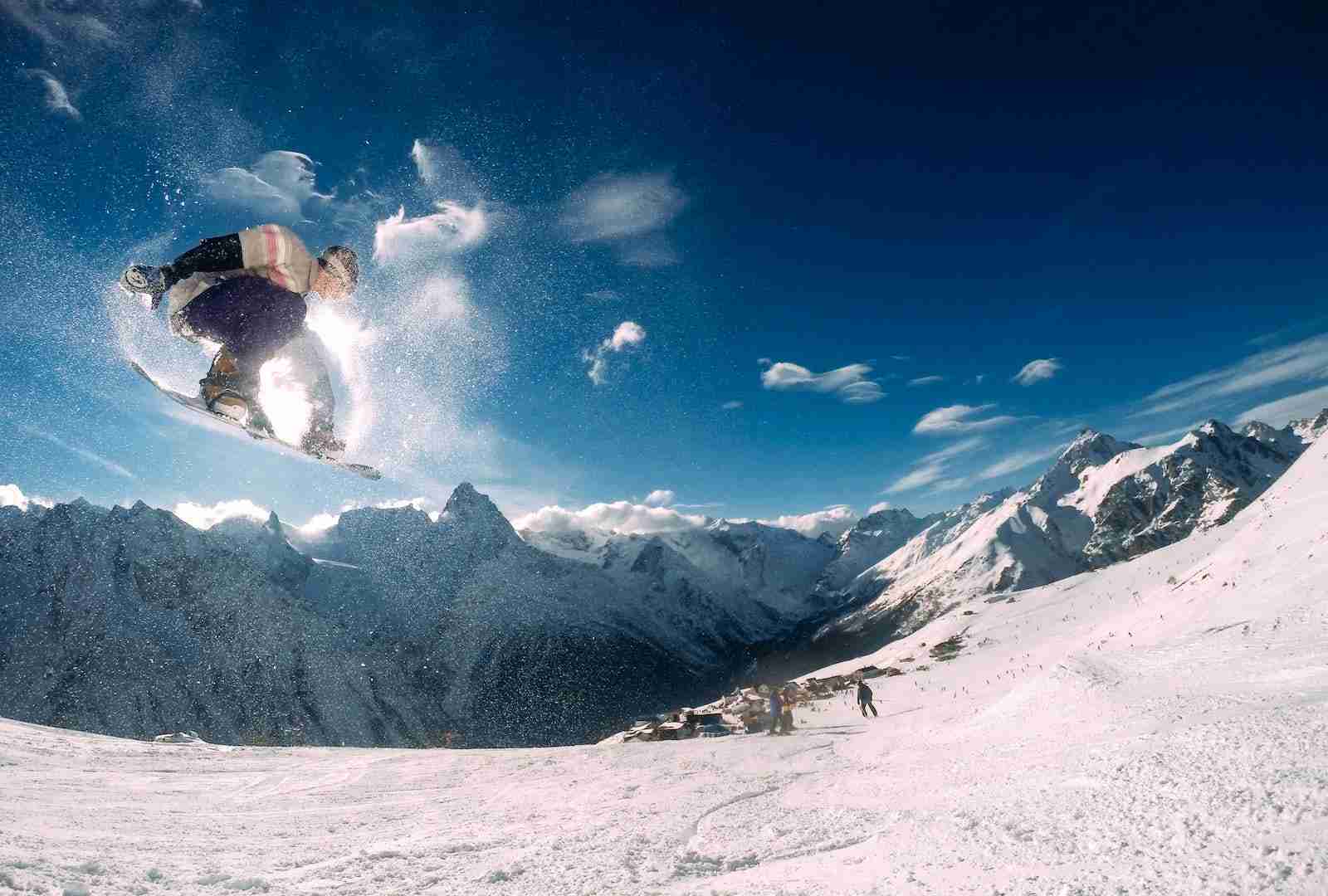24 Fun Facts About Snowboarding | Riding the Snow Waves
1. Sherman Poppen’s 1965 “Snurfer” births modern snowboarding.
Blending surfing with snow, Sherman Poppen’s 1965 “Snurfer” sparks a revolution, birthing modern snowboarding and forever changing the winter sports landscape.
The innovative combination laid the foundation for a dynamic, exhilarating sport enjoyed worldwide.
2. Events like the Arctic Challenge embrace unpredictable, extreme weather.
Adding excitement to competitions, events like the Arctic Challenge embrace unpredictable, extreme weather, showcasing the sport’s adventurous spirit and testing riders’ adaptability and skill.
These events not only celebrate the raw beauty of nature but also challenge riders to perform at their best in diverse and challenging conditions.
3. Snowboarding’s 1997 X Games debut elevates its status.
Propelled into the mainstream, snowboarding’s 1997 X Games debut solidifies its place in extreme sports culture, marking a pivotal moment in the sport’s history.
The exposure and recognition from the X Games catapulted snowboarding into the forefront of action sports, captivating audiences with its high-flying tricks and daring maneuvers.
4. Diverse binding options transform snowboarding experience.
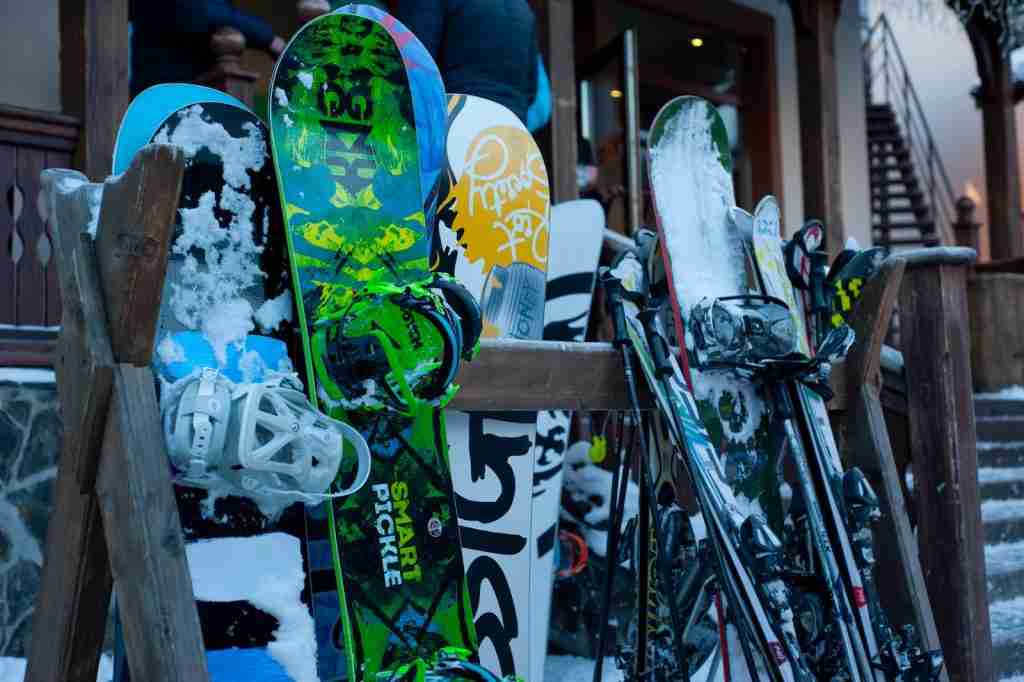
Offering diverse options, strap-in, step-in, and rear-entry bindings customize the snowboarding experience for enhanced comfort and control, catering to riders’ individual preferences.
This innovation not only improved the functionality of snowboards but also allowed riders to tailor their equipment to match their unique riding styles.
5. Jake Burton and Tom Sims: Founders pave the way for snowboarding.
Pioneers of influential snowboard brands, Jake Burton and Tom Sims significantly contribute to the growth and evolution of snowboarding, leaving an enduring legacy in the industry.
Their visionary leadership and commitment to the sport laid the groundwork for the thriving snowboarding community we see today.
6. 1990’s first terrain park fueled freestyle snowboarding’s rise.
The creation of the first terrain park in 1990 fuels the rise of freestyle snowboarding, transforming mountains into playgrounds for creative expression and pushing the boundaries of what’s possible.
Freestyle snowboarding’s growth not only brought new energy to the sport but also showcased the incredible skill and artistry of riders.
7. Stratton Mountain initiates change in 1983.
Marking a game-changing moment, Stratton Mountain’s 1983 lift of the snowboard ban fosters acceptance and paves the way for widespread recognition, fostering a more inclusive snowsports community.
This pivotal decision opened doors for snowboarders, promoting a sense of unity and breaking down barriers within the winter sports industry.
8. “Fakie” and “Switch” redefine snowboarding maneuvers.
Defining backward riding and turning, the terms “fakie” and “switch” add flair to maneuvers, showcasing riders’ versatility and skill, contributing to the sport’s dynamic and expressive nature.
These terms not only describe specific techniques but also highlight the creative and individualistic nature of snowboarding maneuvers.
9. Asymmetrical snowboards optimize riders’ natural stances.
Enhancing natural stances, asymmetrical snowboards with uneven edges optimize performance and comfort, reflecting a commitment to improving the rider experience and pushing the boundaries of design.
The asymmetrical design acknowledges and accommodates the nuances of a rider’s stance, leading to more intuitive and responsive snowboarding.
10. Terry Kidwell’s tricks influence big air snowboarding competitions.
Shaping big air snowboarding competitions, Terry Kidwell’s influential tricks push the boundaries of aerial maneuvers, inspiring future generations and defining the evolution of the sport.
Kidwell’s pioneering approach to big air not only showcased technical skill but also set the stage for the spectacular displays of athleticism seen in modern snowboarding competitions.
11. Snowboarding enters the Winter Olympics in 1998, leaving a mark.
Making its mark on the international stage, snowboarding enters the Winter Olympics in 1998, contributing to the sport’s ongoing growth and cementing its status as a global phenomenon.
The inclusion in the Olympics not only brought a new level of prestige but also introduced snowboarding to a broader audience, inspiring a new generation of enthusiasts.
12. Tom Morey’s surf-inspired “Winterstick” shapes early snowboarding design.
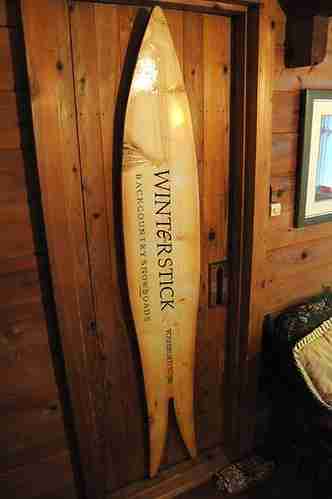
Bridging the gap between surfing and snow sports, Tom Morey’s surf-inspired “Winterstick” shapes early snowboarding design with innovative flair, influencing the aesthetic and functionality of snowboards.
Morey’s visionary approach introduced a new dimension to snowboarding, incorporating elements of surf culture and shaping the trajectory of board design.
13. 1981’s “Suicide Six” marks snowboarding’s inaugural competition.
Marking snowboarding’s inaugural organized event, the “Suicide Six” competition in 1981 reflects grassroots origins and a rebellious spirit, laying the foundation for organized snowboarding competitions.
The rebellious and adventurous spirit of this event set the tone for the snowboarding community, emphasizing camaraderie and a love for the mountains.
14. Board shapes significantly impact snowboarding styles.
Influencing riders’ styles, different board shapes, whether directional or twin, impact their approach to the mountain and tricks, contributing to the diversity and innovation within the sport.
The variety of board shapes allows riders to tailor their equipment to match their preferred riding style, fostering creativity and pushing the boundaries of what’s possible.
15.What defines snowboarders?
Snowboarders are enthusiasts and athletes who engage in the exhilarating sport of snowboarding.
They ride specialized boards down snow-covered slopes, showcasing a blend of skill, style, and passion for the mountains.
16. Splitboarding emerges, allowing climbing with split ski-like boards.
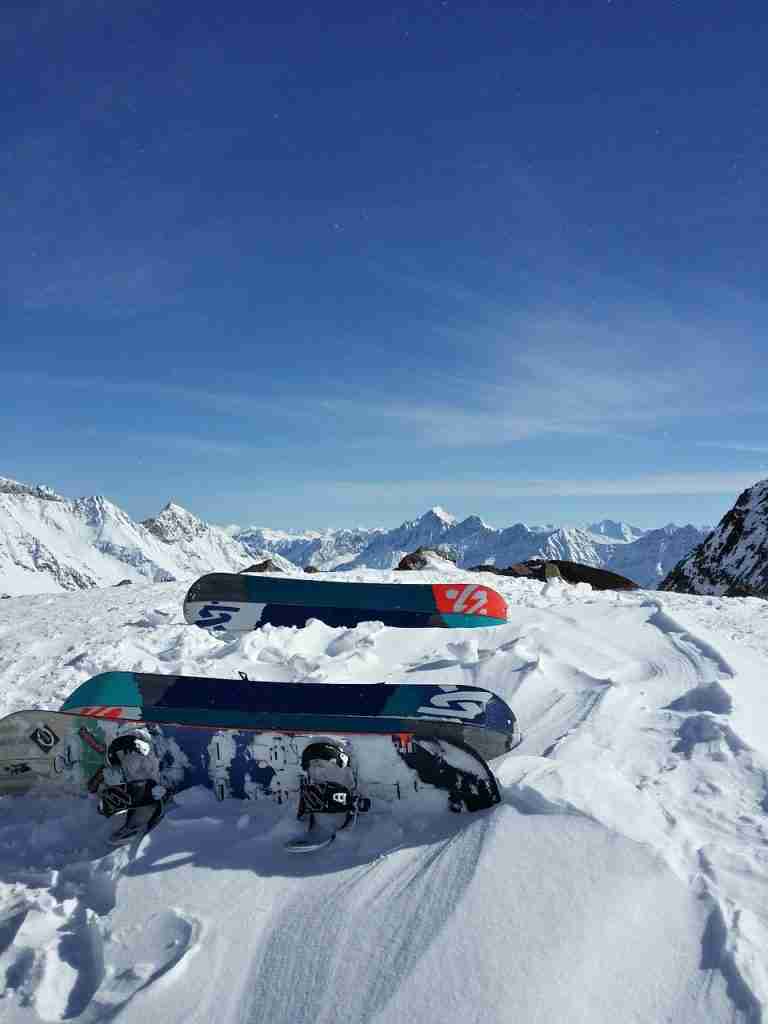
Revolutionizing backcountry access, splitboarding emerges, enabling climbing with split ski-like boards and opening new possibilities for exploration, empowering riders to access untouched terrain.
Splitboarding’s advent not only expanded the scope of snowboarding but also offered a more sustainable and versatile approach to exploring remote and challenging landscapes.
17. Homemade “Snurfer” sparks snowboard creation in 1965.
Crafted from two skis, the homemade “Snurfer” in 1965 sparks the DIY inception of snowboarding, setting the stage for a global phenomenon and inspiring a generation of innovators.
This grassroots approach not only created a new sport but also fueled a culture of creativity and individual expression.
18. Backcountry snowboarding’s popularity grows, seeking untouched powder in wilderness.
Reflecting a desire for untouched powder in remote settings, backcountry snowboarding’s popularity grows, creating a more immersive and authentic experience, connecting riders with the raw beauty of nature.
The growing popularity of backcountry snowboarding emphasizes a return to the roots of the sport, where the focus is on exploration, adventure, and the joy of riding untouched terrain.
19. Snowboard cross: Blending speed and strategy inspired by motocross.
Blending speed and strategy, snowboard cross draws inspiration from motocross, offering thrilling head-to-head races and a competitive edge, captivating audiences with its dynamic and unpredictable nature.
The combination of speed and strategy in snowboard cross showcases the diverse skill set of riders, creating a captivating spectator experience and adding an exciting dimension to competitive snowboarding.
20. Heli-boarding, accessed by helicopter, offers exclusive mountain descents.
Elevating the experience, heli-boarding, accessed by helicopter, offers exclusive descents in pristine mountain landscapes, providing unparalleled access to untouched powder and a truly exclusive adventure.
Heli-boarding not only elevates the thrill of riding but also provides a unique opportunity to explore remote and breathtaking locations, creating memories that last a lifetime.
21. Grassroots groups combat climate change: Protect Our Winters.
Advocating for environmental responsibility, grassroots groups like Protect Our Winters combat climate change within the snowboarding community, inspiring collective action for a sustainable future.
These initiatives demonstrate the snowboarding community’s commitment to preserving the winter environment, uniting riders in a shared responsibility to protect the mountains they love.
22. Splitboarding resurgence provides backcountry access without traditional equipment.
Resurging in popularity, splitboarding provides backcountry access without traditional equipment, allowing riders to traverse snowy landscapes with versatility and efficiency, reflecting a new era of exploration.
The resurgence of splitboarding offers a more accessible and efficient means of exploring the backcountry, opening up new opportunities for riders to connect with nature and experience the thrill of untouched powder.
23. Freeride World Tour showcases elite riders conquering challenging terrains.
Emphasizing skill, creativity, and mastery, the Freeride World Tour showcases elite riders conquering diverse and challenging terrains, pushing the boundaries of what’s possible in freeride snowboarding.
The Freeride World Tour not only highlights the pinnacle of skill in the sport but also serves as a platform for riders to express their creativity and take on some of the most challenging mountain terrain.
24. From Japan to the Swiss Alps, snowboarding unites riders worldwide.
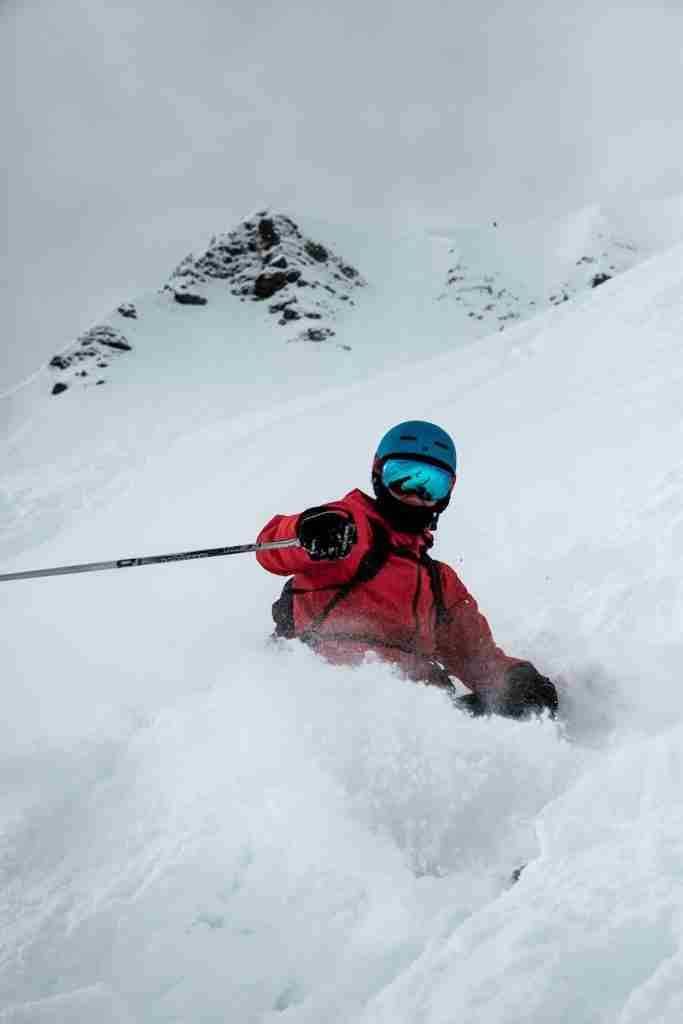
Transcending boundaries, snowboarding unites riders worldwide, celebrating the universal joy of carving down snowy slopes from Japan to the Swiss Alps, fostering a global community connected by their shared passion.
The global appeal of snowboarding not only transcends cultural and geographical boundaries but also creates a shared bond among riders, emphasizing the universal love for the exhilarating and freeing experience of snowboarding.
FAQs
The best snowboard is subjective, dependent on factors like size, shape, flex, and riding style, catering to individual preferences.
A snurfer is a historical precursor to modern snowboards, resembling a skateboard without wheels, invented in the 1960s.
Snurfing is the act of riding a snurfer, an early form of snowboard originating in the 1960s, combining elements of surfing and skateboarding on the snow.
The snowboard was invented in the 1960s, with Sherman Poppen creating the first prototype called the “Snurfer” in 1965.
Renowned snowboarders include Shaun White, Chloe Kim, Travis Rice, and Hannah Teter, each achieving iconic status through their skills and contributions to the sport.

